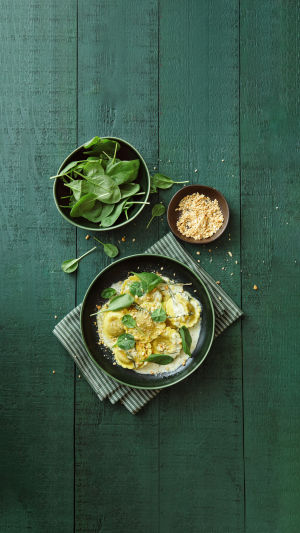Italian cuisine is renowned worldwide for its rich flavors, diverse ingredients, and intricate recipes.
Among the plethora of delectable dishes, ravioli stands out as a quintessential representation of Italian culinary artistry.
These small parcels of pasta, filled with an array of delicious ingredients, offer a delightful blend of textures and flavors that captivate the palate. Let’s embark on a culinary journey to explore the origins, variations, and cultural significance of ravioli in Italian cuisine.
<b>A Glimpse into History</b>
The origins of ravioli can be traced back to the Middle Ages in Italy. Historical records suggest that ravioli were first mentioned in the writings of Francesco di Marco Datini, a merchant of Prato, Tuscany, in the 14th century. However, it is believed that the concept of stuffing pasta dates back even further, possibly influenced by Middle Eastern dumplings brought to Italy by traders and travelers. The term "ravioli" itself is derived from the Italian word "riavvolgere," meaning "to wrap," which perfectly describes these delightful pasta envelopes.
<b>Traditional Ingredients and Preparation</b>
At their core, ravioli consist of a thin pasta dough filled with a mixture of ingredients. The dough is typically made from flour and eggs and rolled out into thin sheets. The filling can vary widely, reflecting the regional diversity of Italian cuisine. Classic fillings include ricotta cheese, spinach, ground meat, and herbs, but more modern variations incorporate ingredients like mushrooms, lobster, and truffles.
The preparation of ravioli requires precision and skill. The filling is placed on one sheet of pasta, which is then covered with another sheet. The edges are sealed, often with the help of a fork or a specialized ravioli cutter, ensuring that the filling remains encased during cooking. The ravioli are then boiled until they float to the surface, indicating they are cooked to perfection.
<b>Regional Variations</b>
Italy's rich culinary heritage is reflected in the diverse regional variations of ravioli. Each region has its own unique take on this beloved dish, showcasing local ingredients and traditions.
In Tuscany, ravioli di ricotta e spinaci (ricotta and spinach ravioli) is a popular choice, often served with a simple butter and sage sauce. The delicate balance of creamy ricotta and earthy spinach exemplifies the region's emphasis on fresh, high-quality ingredients.
In Liguria, ravioli alla Genovese feature a filling of meat, often a combination of veal, mixed with chard or spinach, and seasoned with marjoram and Parmesan cheese. This variation is typically served with a light tomato sauce or a traditional walnut sauce, known as salsa di noci.
Sardinia offers a unique twist with culurgiones, a type of ravioli filled with potatoes, pecorino cheese, and mint. The distinctive pleated shape of culurgiones and the combination of savory and fresh flavors highlight the island's culinary creativity.
<b>Ravioli in Contemporary Cuisine</b>
While traditional ravioli recipes continue to be cherished, modern chefs have embraced innovation, pushing the boundaries of this classic dish. Contemporary variations often feature unexpected fillings and inventive presentations, elevating ravioli to new heights.
Chefs experiment with fillings like butternut squash and amaretti cookies, creating a harmonious blend of sweet and savory flavors. Seafood ravioli, filled with ingredients such as crab, shrimp, or scallops, offer a luxurious twist on the classic. Additionally, the use of colorful pasta doughs, made with beetroot, spinach, or squid ink, adds visual appeal to the dish, making it a feast for both the eyes and the palate.
<b>Cultural Significance</b>
Ravioli holds a special place in Italian culture, symbolizing family, tradition, and the joy of sharing a meal. In many Italian households, the preparation of ravioli is a cherished activity, often involving multiple generations working together in the kitchen. The process of making ravioli by hand fosters a sense of connection and continuity, passing down culinary traditions from one generation to the next.
Ravioli, with its rich history, diverse variations, and cultural significance, is a true testament to the artistry of Italian cuisine. Whether enjoyed in a rustic trattoria in Tuscany, a seaside restaurant in Liguria, or a modern eatery in Milan, ravioli captures the essence of Italy's culinary heritage. As we savor each bite of these delectable pasta parcels, we are transported to the heart of Italy, experiencing the flavors, traditions, and warmth that define this beloved dish.





